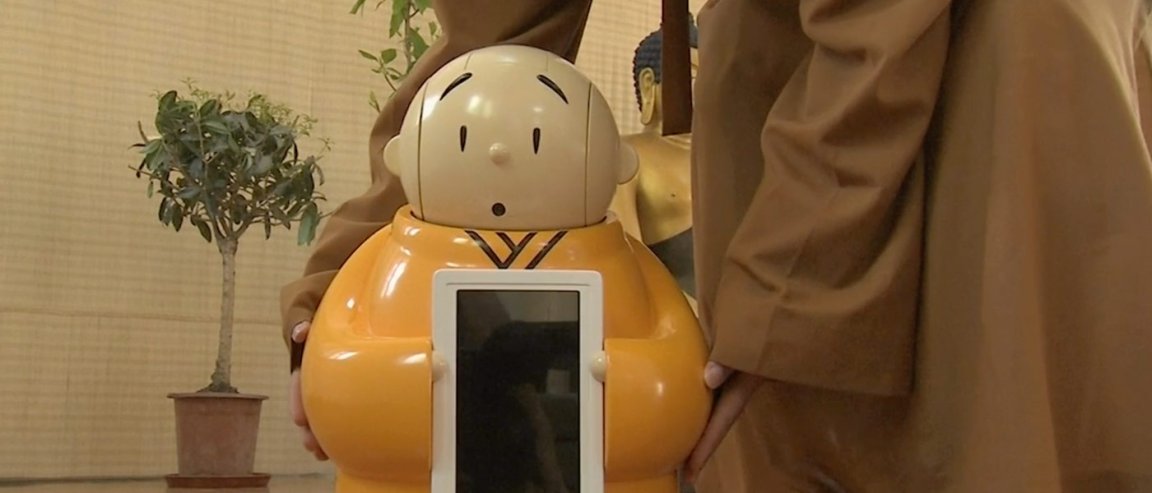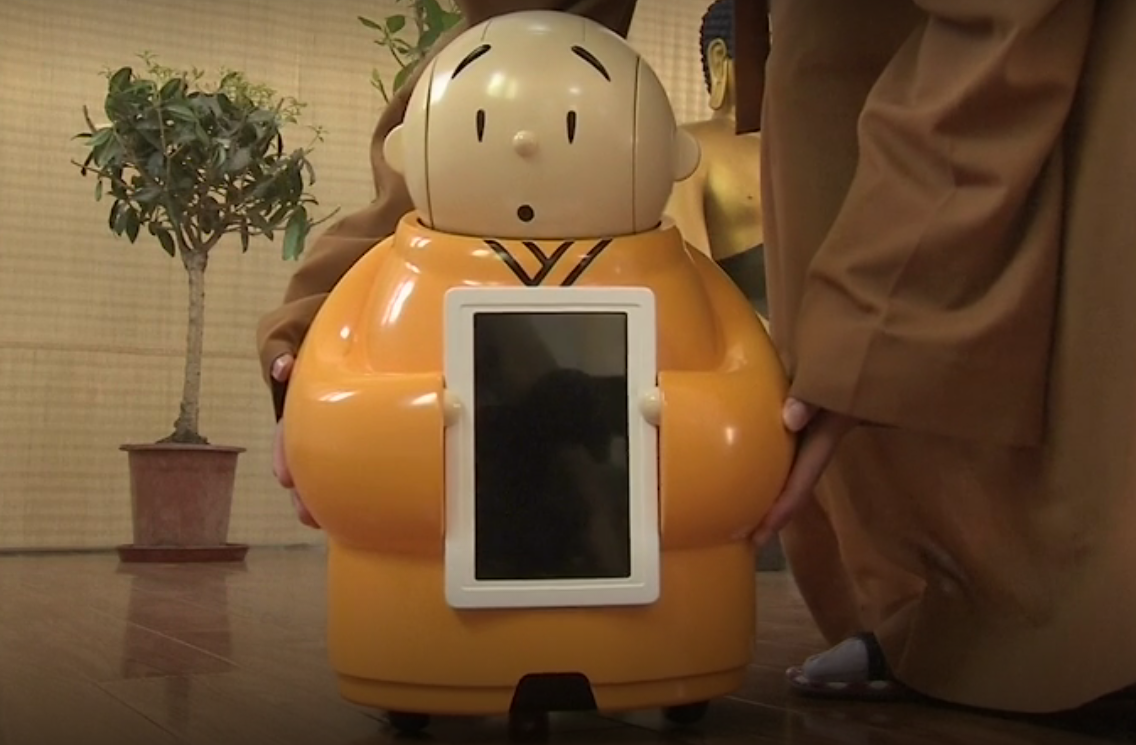
Ancient Tradition Meets Modern Technology
In Beijing China, don’t be surprised if you one day come across a 2-foot high robot monk roaming the halls of Longquan Temple.
Xian’er, as he is called, is intended to teach the basics of Buddhist faith—chanting mantras and answering questions via a touch-screen tablet attached to his chest.
Perhaps it’s a bid to make this ancient religious tradition become more relatable to a younger generation, but as Xian’er’s creator, Master Xianfian (a human monk) explains, “Science and Buddhism are not opposing nor contradicting, and can be combined and mutually compatible.” And that blending is exactly what Xianfian is going for.

Xian’er is the brainchild of the 500 year old temple working together with various artificial intelligence experts from Chinese universities and technology companies.
He has since been introduced at numerous robotic fairs, but largely spends his time in the temple answering questions such as “What is the meaning of life?” or “Who are your parents?” To which the clever machine replies: “My master says the meaning of life is to help more people finally leave behind bitterness and gain happiness,” and “That’s ridiculous, how can robots have parents?” (though, to be fair, one could argue that Xianfan is the tiny robots father).
Xianfan believes that his robot reflects the innovative Buddhist spirit and could even help Buddhism reach a bigger, wider audience.
Novel as this robot monk may be, some followers of the Buddhist tradition and visitors of the temple are dubious as to how Xian’er could really make a difference with their faith. On the other hand, a certain number of experts believes that, with the rapidly advancing AI and robotic technology, it’s likely that robots like Xian’er might be leading future generations of humans in a number of ways.